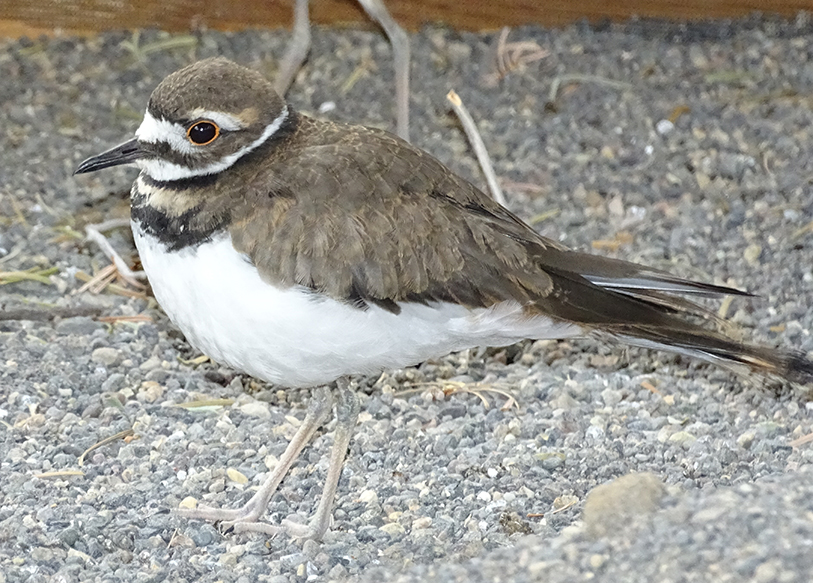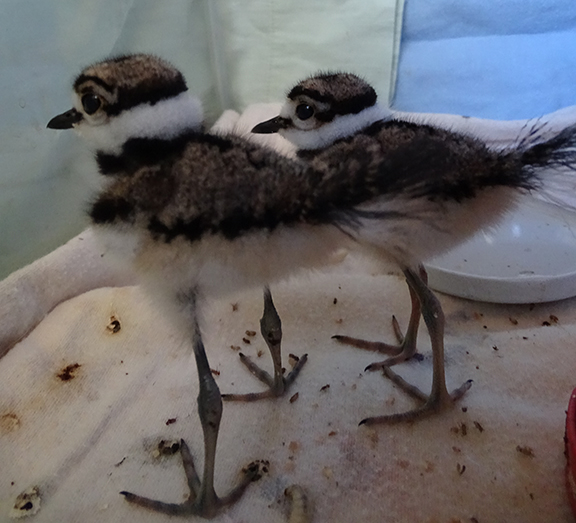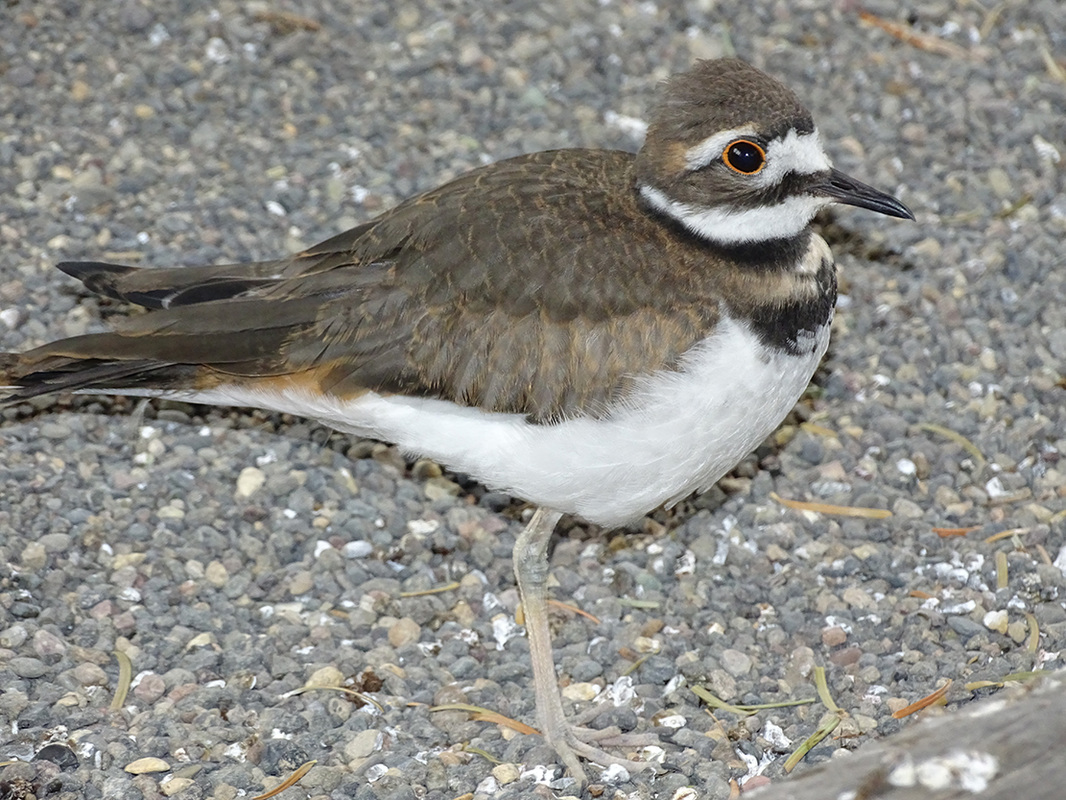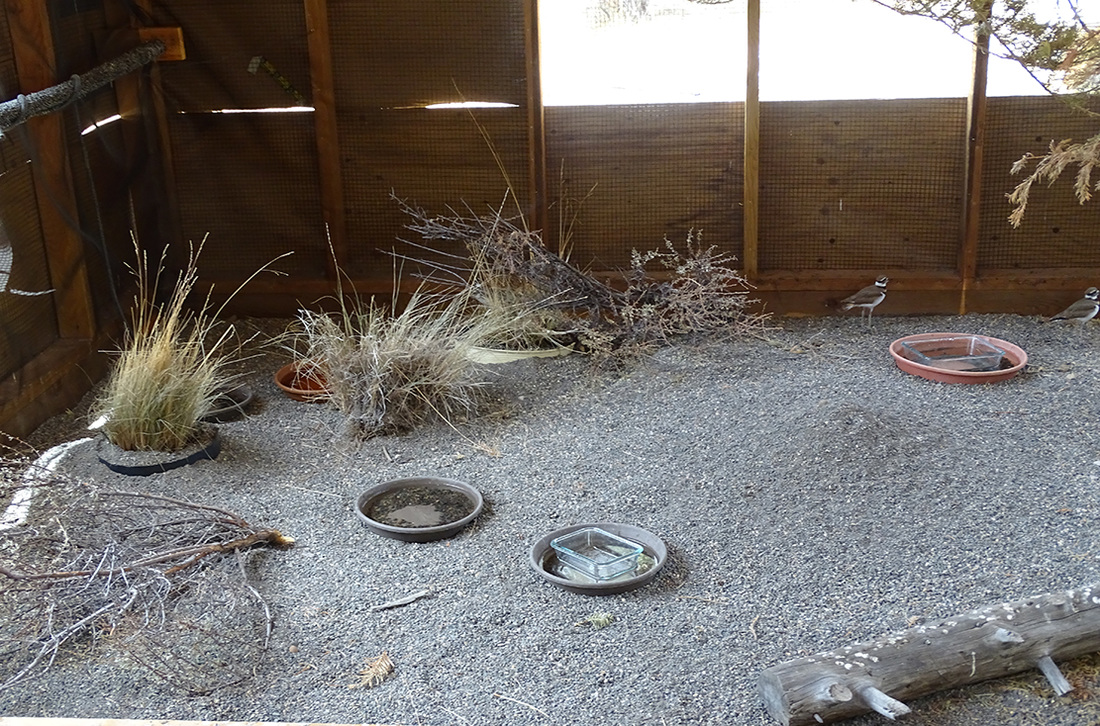|
Well its been a real Killdeer season this year! Above is Sweetie, a baby raised by Kim F, here in Central Oregon and transferred to me to join my crew. These inland shorebirds come in mainly because they fall into storm drains, their parents are killed on highways, or dog or cat grabs them. They come in tiny usually, under 6 grams and sized about that of a quarter with legs. They take special settings and care, are easily stressed, and require a lot of attention. IF they survive past a week or few days and are housed and cared for appropriately, they can grow to be released. These two little ones came in after being found in a storm drain (someone heard the peeping). After not finding either parent, they came to us. The little black specs are flightless fruit flies, one of the many bugs they have to eat. Insects are the main diet for these guys, there is no gaping for a hand-made diet and I have never seen them eat dog food! Fly larvae, white mealworms, waxworms, and baby crickets are what they need to survive...and A LOT of those. These have to be fed a particular way to avoid calcium deficiencies and other nutritional issues. All of the bugs we rehabbers feed are not nutritionally balanced and must be supplemented in specific ways, otherwise long-term issues will result. Many of these would not be seen before release, but only after. For example, without the right amount of calcium to phosphorus as a juvenile, a bird could grow up to be unable to fully calcify and egg, with that egg potentially breaking inside the bird and killing the bird. Leg and wing fractures also occur once in the while in birds raised with poor nutrition. As baby birds grow, whether song, shore, or water, they all must be transferred to increasingly larger enclosures that fit their particular needs for feeding, enrichment, safety, and physical development. Shorebirds require enclosures that protect, but also encourage muscle development in their feet and legs. Thus, these little ones moved into a larger setting, but are still on soft cloth. After a bit, they all go into a 'shorebird box' or other much larger enclosure that for us in Central Oregon is still inside since our nights can be in the 30s. The box is not a box per se, but a large, wood structure that I can put pea gravel or sand in for their feet and they can run and even take small hopper jumps in. They grow in their for another bit, till finally they have the feathering to stay warm and can go outside in the shorebird aviary. I had another intake of 3 more Killdeer just a bit older that were able to go out to the aviary sooner than my little ones. This is the outdoor aviary, which is 12 x 16, and large enough for them to fly. The habitat is set up to allow them to learn to navigate high desert landscapes, which for them is shrubs, dirt, and grasses. They are found in all sorts of habitats, and while shore birds, they do frequent water, they also look for their bugs in other wide open spaces.
You can see the little mound of pea gravel in the center, Killdeer like to see around them, so this gives them an idea of a view. The walls are not completely enclosed so they can see their surroundings. Anyhooo.....this is Killdeer rehab....Hard, expensive, and very time intensive....but sooo worth it. If you love shorebirds, make sure to support your local shorebird rehab expert, they need it! Comments are closed.
|
AboutNative Bird Care's is celebrating its 10th anniversary! Our main focus is song, shore, and waterbirds. We offer specialized care and facilities for these extraordinary birds.. Archives
January 2024
Categories
|





 RSS Feed
RSS Feed